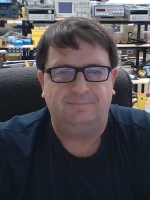RobertDennis.jpg

Robert Dennis, Ph.D.
Bob Dennis, Ph.D., is Associate Professor of Biomedical Engineering at the University of North Carolina at Chapel Hill. He is a medical scientist and tissue engineer, and also has an active consultancy in medical device design and product development.
He has worked in the aerospace and defense industries, the automotive industry, and the medical device industry. Early in his career he developed components and processes for the guidance and targeting systems for the Strategic Missile Defense System and the first generation of electronic automatic transmissions for Ford Motor Company. He has consulted for many private corporations as well as NASA.
He co-founded the Biomechatronics Group in the Harvard-MIT HST program in the original MIT Artificial Intelligence Laboratory, where he developed the world’s first hybrid (living + synthetic) swimming robot for DARPA. As a professor at U-Michigan and UNC, he has lead multi-institutional research projects to develop new tissue engineering technologies for the United States Department of Defense.
He owns a private laboratory facility for advanced product development where he has developed and collaborated on the development of devices and products for a wide range of applications including measuring blood viscosity and coagulation, pulmonary research, neuroscience, bioreactors for tissue engineering cardiovascular, neural, musculoskeletal and pulmonary tissues, measurement of physiological and biophysical properties of cells and tissues, the non-invasive control of the human autoimmune system by means of ultra-low power electromagnetic fields, and measurement of brain function and health.
Dennis has focused on the development of PEMF technology over the past decade to help him recover from a lower back injury sustained as a volunteer firefighter. He has optimized the technology from his ongoing PEMF research for the treatment of severe orthopedic injury and chronic pain, with a special emphasis on back injuries.
He has developed new safe, ultra-low power, scientifically-based, affordable, wearable PEMF technology for the control of chronic pain, inflammation, and to accelerate tissue recovery from injury. His objective is to bring PEMF technology mainstream, with solid science, high integrity, rapid innovation, and affordable products. To learn more, visit the Micro-Pulse ICES website.



